




Discover the valuable insights our consultants provide. Subscribe to our Insights blog to receive email alerts whenever we post something new!


Published on: Mar 25, 2022 3:15:32 PM by Andrea Hayes
Updated on: March 18, 2025
One of the core benefits of Acumatica is the ability to easily access data. Dashboards are a convenient way to display essential data so you can see at a glance what you need to know. With Acumatica dashboards, you can monitor current financial, operational, and organizational information, and analyze real-time trends and KPIs that relate to the job at hand.
Over the last several versions, Acumatica has introduced out-of-the-box dashboards that are available to use right away. There are also tools to help customize and personalize those dashboards to make them even easier to use.
In early 2021, Acumatica laid a framework for dashboards to be available immediately upon installation. Historically dashboards had to be created from scratch by setting up generic inquiries that operate behind the scenes and then creating personal visualizations from that point. But as more Acumatica users utilized the dashboard capabilities, the company started to roll out more out-of-the-box dashboards.
Below are some examples of these new dashboards:
Within a core finance focus, there are three distinct dashboards – Controller, AP Clerk, and AR Clerk. The Controller dashboard provides a centralized view of all finance and accounting information as it draws in components of the AP Clerk and AR Clerk. There are also a series of widgets on the Controller dashboard that give very quick information into metrics such as Total AR, Total AP, Aging, etc.
Within the AR Clerk and AP Clerk dashboards, there will be a similar view, but they are structured more strategically towards those specific teams. These finance dashboards can not only provide quick access into these core areas, but they can also provide the foundation to expand your dashboard by taking components of these dashboards to tailor your view.
There are a few dashboards that support immediate payroll statistics – Operational view, Personal view, and Executive view.
The newest set of dashboards have a focus on the manufacturing side of the business. There are three distinct dashboards within this focus – Production Manager, Production Meeting, and Engineering.
As Acumatica moves forward, there will be a continued focus on the rollout of additional dashboards for easy utilization. Not only is Acumatica laying the foundation for any dashboards to tailor yourself, but they will also provide those quick views out of the box.
Even though the new dashboards in Acumatica are designed to be used immediately out-of-the-box upon installation, they can also be highly customized to increase usability.
Beginning in the out-of-the-box dashboard, there may be widgets you don't need to use or maybe you want to fine-tune it to what will work best for your situation. To start the process of personalization, click the design button in the upper right-hand corner of the dashboard. The correct user security rights are required so you do need to have the dashboard designer role.
Once in the design mode, customization features that can be implemented include copying and moving widgets, resizing visuals, deleting or adding new widgets, editing visualization types (i.e., trend, line chart, and the new meter visualization tool), and modifying aggregate fields to produce different views of how KPIs are displayed.
Pro Tip: To preserve the original dashboard, go to Properties and create a copy of the dashboard. Then you can work from that copy with no risk of losing the integrity of the original dashboard.
Acumatica has a mobile app so you can take your financial reporting with you on the go, anytime and anywhere. With the new feature release in 2022, the mobile app has a new layout that offers greater usability. This new layout displays KPIs across the top as well as workspaces below.

The mobile app works very similar to the web application in that you can customize the dashboard however you choose by simply clicking the three dots at the top and editing the list.
Furthermore, you can also add widgets or KPIs within the workspaces as well. Just select the particular workspace and add any widget or view to that workspace just as you would in the web application.
A well-designed dashboard is a powerful tool for data-driven conversations. Armed with the same collection of information, your business can make faster decisions. It’s important to keep in mind the following best practices for building the most effective dashboards:
Using Acumatica, it’s easy to view key information at a glance with real-time, user-friendly dashboards customized by individual, role, or department. If you have questions or require assistance with utilizing Acumatica dashboards, contact SVA Consulting at technicalsupport@svaconsulting.com. We are here to help.
© 2022 SVA Consulting
Share this post:

Andrea is a Principal for SVA Consulting, LLC, a member of the SVA family of companies. Andrea has a BA from University of Wisconsin, Madison and more than fifteen years of analyst and consulting experience in the private and public sectors. She has expertise forming vision and strategy to help small to mid-size businesses utilize people, processes and technology to optimize operations and realize their goals. Andrea has a diverse background merging analytics, consulting and strategy. She has played a pivotal role in numerous, large scale, ERP, analytics, and data integration implementations across a variety of industries. Prior to joining SVA Consulting, Andrea worked at an affective neuroscience laboratory, contributing to study design, managing analyzing data, and writing grants. She is also published in Nature Neuroscience Journal. Andrea has experience working in the life sciences industry as a management consultant for clients specializing in medical affairs.







contact@svaconsulting.com

(800) 366-9091

1221 John Q Hammons Dr., Suite 201, Madison, WI 53717

18650 W. Corporate Dr., Suite 205, Brookfield, WI 53045

1600 Utica Ave S, 9th Floor,
Saint Louis Park, MN 55416

7135 E. Camelback Road, 230, Scottsdale, AZ 85251

109 West Commercial Street, Suite 107, Sanford, FL 32771
©2026 SVA Consulting, LLC. All Rights Reserved. | Privacy Policy | Cookie Policy | CCPA
